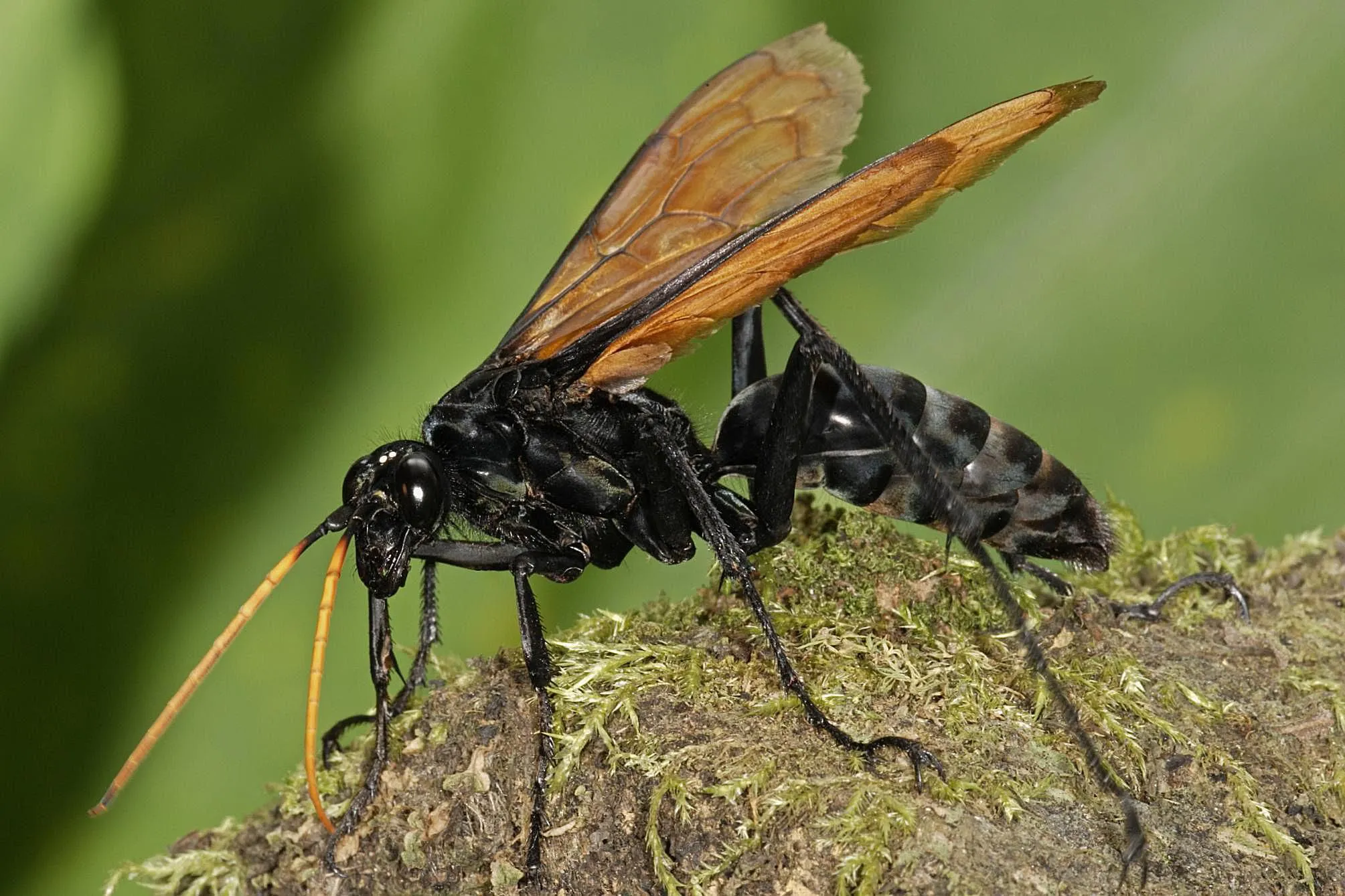Wasp vs Tarantula: 5 Surprising Facts
The natural world is full of incredible creatures, and few are as fascinating – or feared – as wasps and tarantulas. While both are invertebrates, they belong to different classes; wasps are insects, and tarantulas are arachnids. These two creatures often share the same habitats, and they can even encounter each other in the wild. But what are the key differences between a wasp and a tarantula? This article will explore five surprising facts about wasps and tarantulas, revealing their unique characteristics and how they interact with their environment. Get ready to delve into the fascinating world of these two creatures and discover what sets them apart.
The Size Showdown
Size is a fundamental difference between wasps and tarantulas, generally speaking. Wasps come in a variety of sizes, from tiny parasitic wasps measuring a few millimeters to larger species like the cicada killer wasp, which can be up to two inches long. Tarantulas, on the other hand, are significantly larger. They are among the biggest spiders in the world, with some species having a leg span of up to 12 inches. This size difference means tarantulas often dominate in direct encounters, although a wasp’s agility and venom can still pose a threat.
Wasp Anatomy
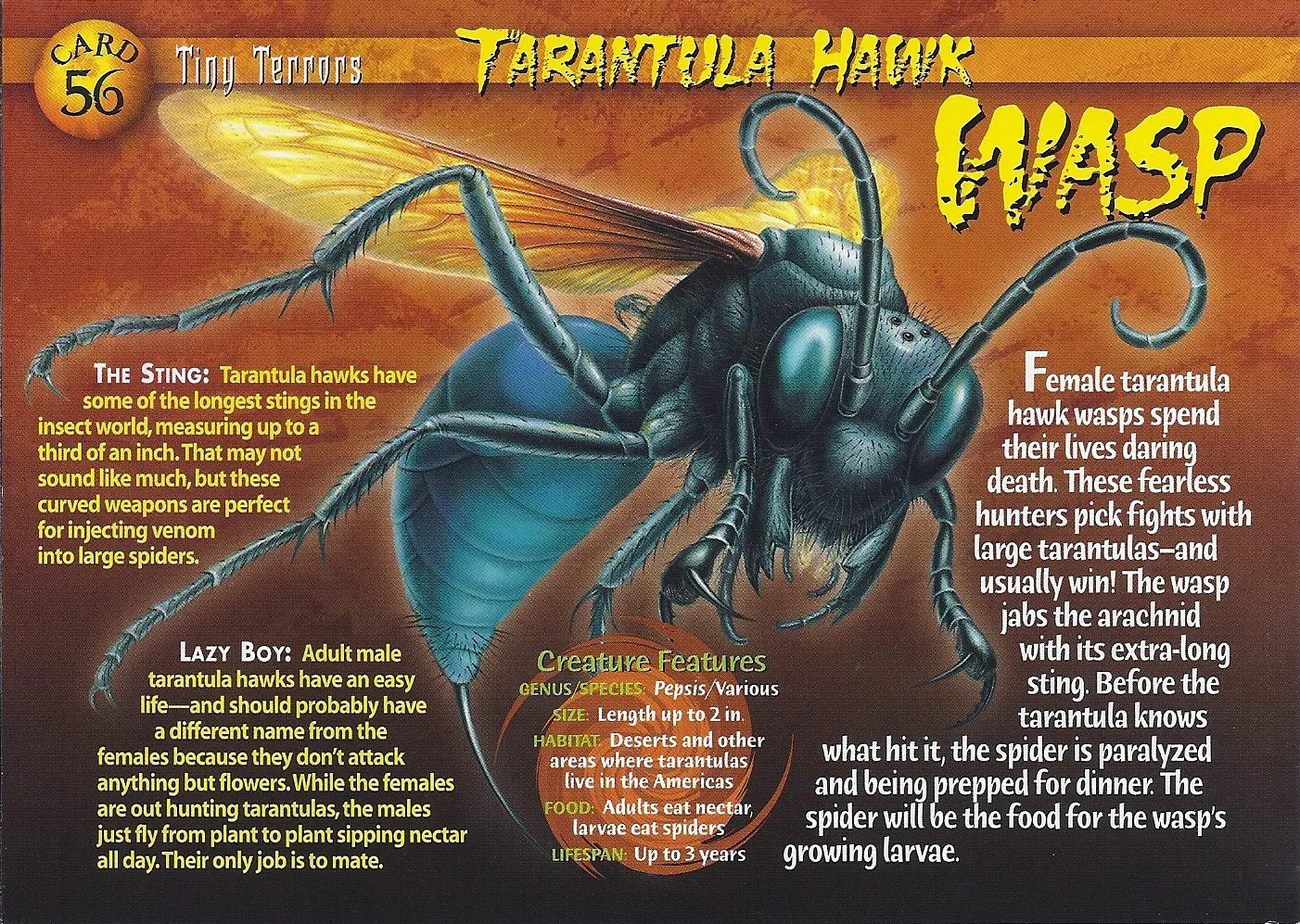
Wasps have a segmented body consisting of a head, thorax, and abdomen. Their bodies are typically covered in a hard exoskeleton. They possess six legs, two pairs of wings, and antennae. Many wasps have a distinctive ‘wasp waist,’ a narrow constriction between the thorax and abdomen. This anatomy allows for great flexibility and maneuverability, which is essential for flight and hunting. The stinger, which is a modified ovipositor in female wasps, is another defining feature.
Tarantula Anatomy
Tarantulas, like all spiders, have two main body parts: the cephalothorax (fused head and thorax) and the abdomen. They have eight legs and eight eyes, although their eyesight is generally poor. Tarantulas also have chelicerae, or fangs, which they use to inject venom. Their bodies are covered in hair, which serves sensory and defensive functions. They possess spinnerets at the end of their abdomen, which they use to produce silk for webbing and other purposes.
Hunting Habits
Both wasps and tarantulas are predators, but their hunting strategies differ significantly. Wasps are incredibly versatile hunters, employing a variety of techniques depending on the species and prey. Tarantulas, as ambush predators, sit and wait for their prey.
Wasp Hunting Strategies
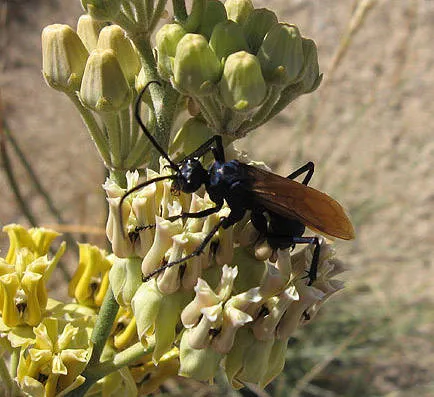
Wasps hunt a wide range of insects and spiders. Some species paralyze their prey with venom and then lay eggs on or inside them, providing a food source for their larvae. Others hunt for food, capturing insects to feed themselves or their young. Some wasps, like the paper wasps, build nests from chewed wood pulp and actively defend their nests from intruders. Their hunting strategies vary depending on the species, ranging from active pursuit to ambush tactics.
Tarantula Hunting Strategies
Tarantulas are ambush predators, meaning they lie in wait for prey to come within striking distance. They typically hunt at night, relying on vibrations in their webs or the ground to detect approaching prey. When a potential meal gets close, the tarantula will swiftly pounce, using its fangs to inject venom and subdue the victim. Tarantulas primarily feed on insects, but they also consume small vertebrates like lizards and even small birds when the opportunity arises.
Venom and Sting: Lethal Weapons
Both wasps and tarantulas use venom or stings to subdue their prey or defend themselves, but the nature and effects of their methods differ considerably.
Wasp Venom
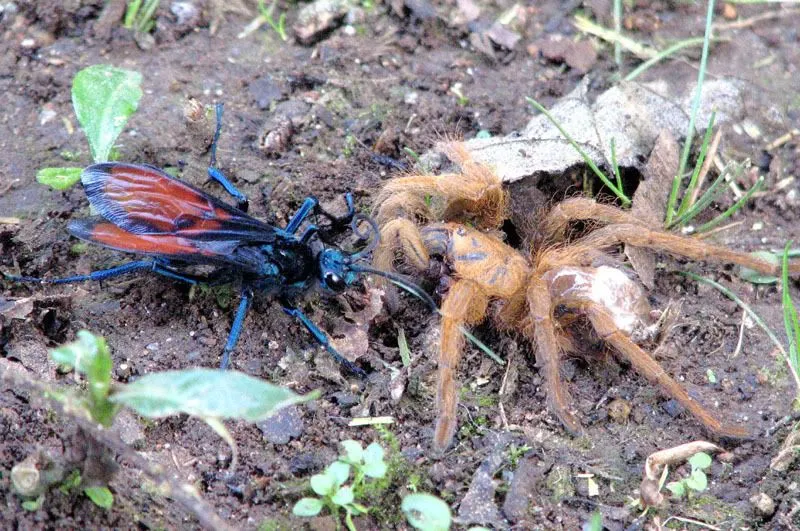
Wasp venom is primarily used for defense and for subduing prey. The venom contains various toxins that cause pain, swelling, and allergic reactions in humans. The sting of a wasp can be extremely painful, and for some individuals, it can be life-threatening. However, most wasps are not aggressive and will only sting if they feel threatened. The chemical composition of wasp venom varies across species, which affects the severity and type of reaction it causes.
Tarantula Venom
Tarantula venom is primarily used to paralyze and digest prey. While tarantula bites can be painful to humans, they are rarely life-threatening. The venom is not particularly potent, and the primary discomfort comes from the size of the fangs and the mechanical damage of the bite. However, allergic reactions are possible, so medical attention should be sought if severe symptoms develop. Tarantulas also possess urticating hairs, which they can flick off their abdomen as a defense mechanism. These hairs cause intense itching and irritation upon contact.
Habitat & Behavior
Wasps and tarantulas inhabit diverse environments, and their behavior patterns are unique. Understanding where they live and how they act is key to understanding their place in the ecosystem.
Wasp Habitat & Behavior
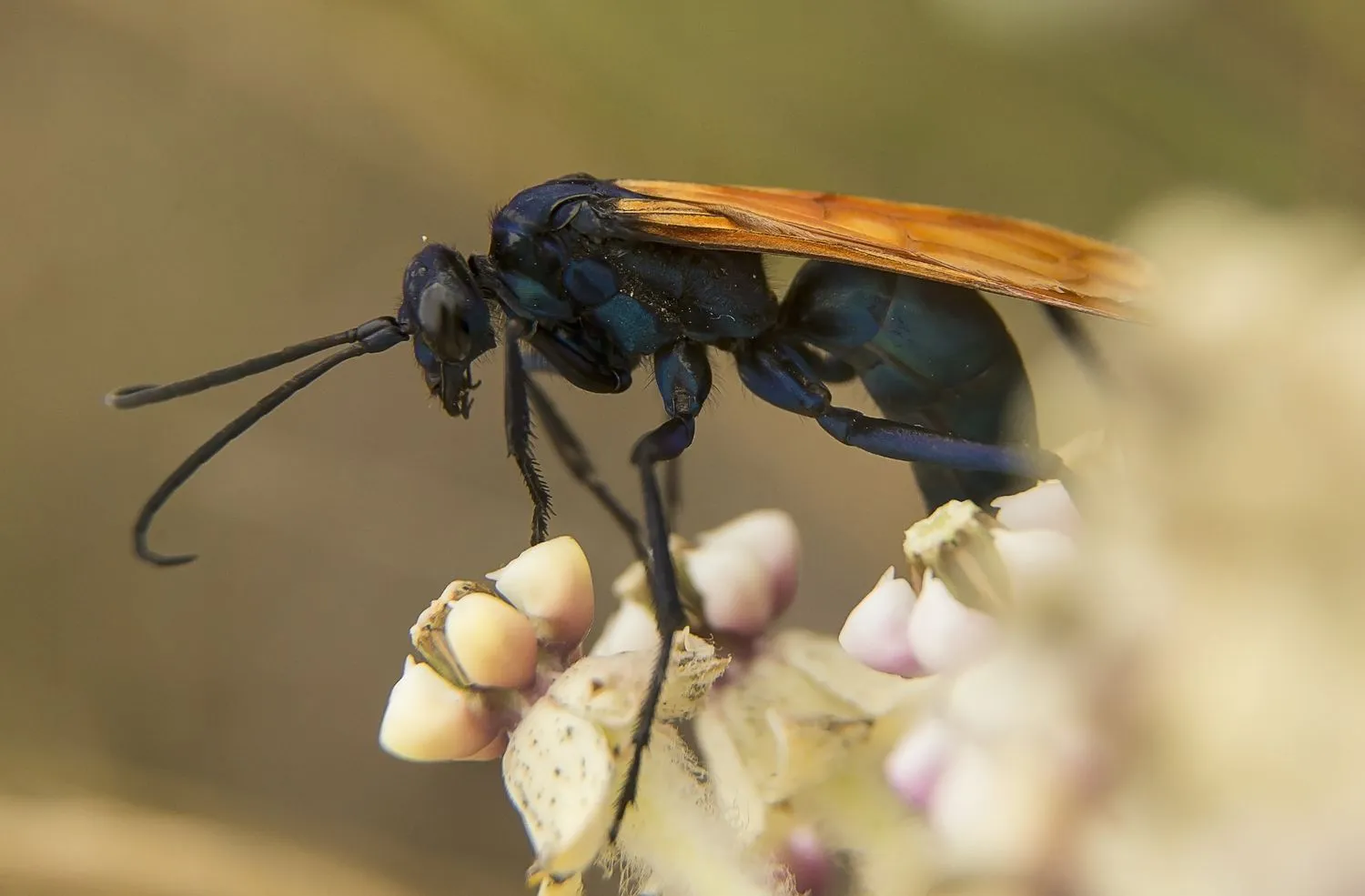
Wasps can be found in various habitats around the world, including forests, grasslands, and urban areas. They build nests from materials like wood pulp, mud, or paper. Their behavior varies greatly depending on the species; some are solitary, while others are social, living in colonies. Wasps play a crucial role in the ecosystem as pollinators and predators, helping control insect populations. They are generally active during the day, foraging for food and maintaining their nests. They are most active during the warmer months.
Tarantula Habitat & Behavior
Tarantulas are native to tropical and subtropical regions around the globe. They live in burrows, under rocks, or in hollow trees. Many species are nocturnal, hiding during the day and emerging at night to hunt. Tarantulas are solitary creatures, except during mating season. They are generally docile, but they will defend themselves if threatened. Tarantulas play an essential role in their ecosystems as predators, helping to keep insect populations in check. Their lifespan can vary, but females can live for decades, while males typically have shorter lifespans.
Lifespan and Lifecycle
The lifespan and lifecycle of wasps and tarantulas demonstrate other intriguing differences. The life cycle affects how they develop and how long they can survive.
Wasp Lifecycle
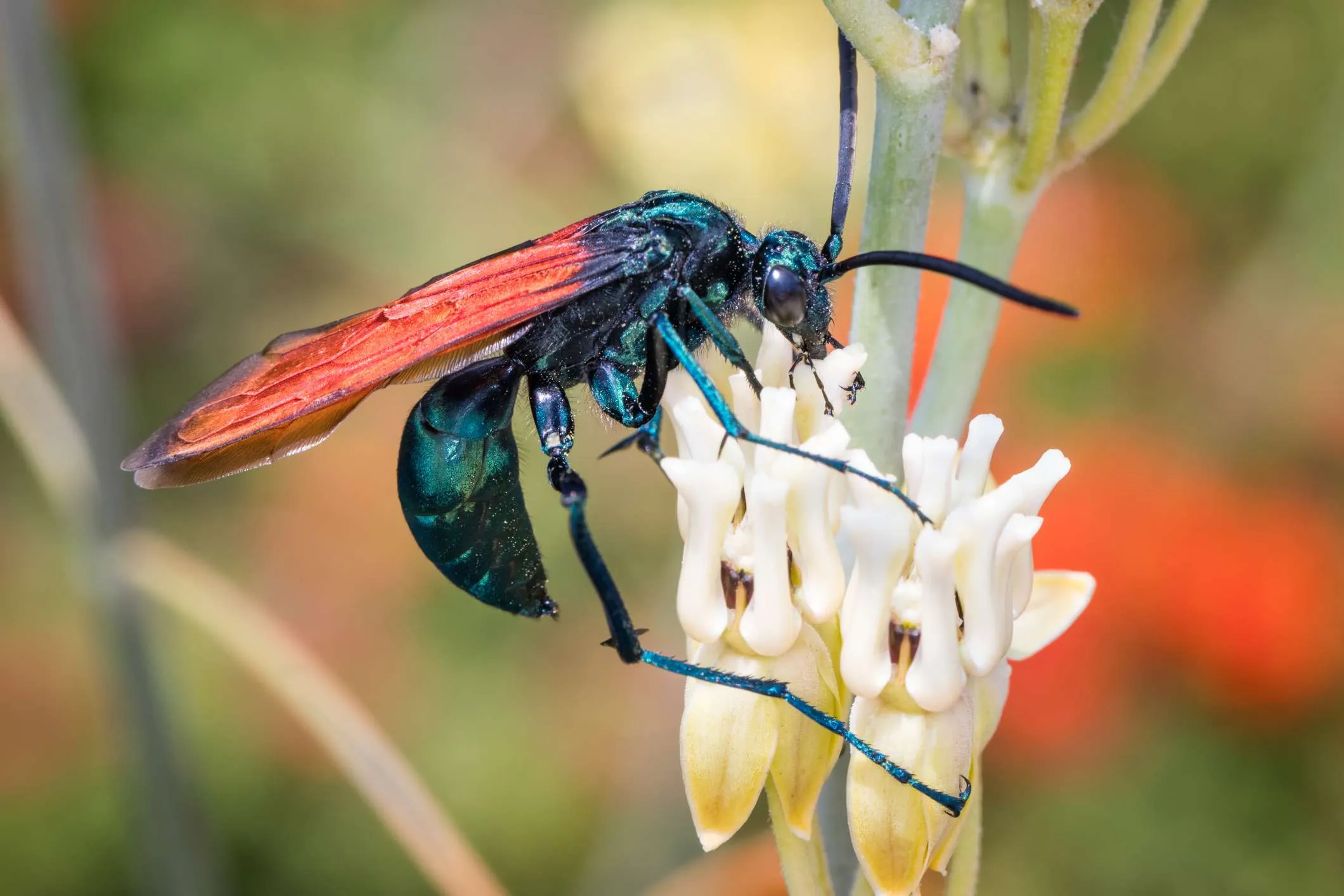
Wasps undergo complete metamorphosis, passing through egg, larva, pupa, and adult stages. The lifecycle duration varies depending on the species. Some wasp species have a single generation per year, while others have multiple generations. Social wasps, like yellow jackets, typically have an annual cycle, with the colony dying off in the winter, except for the new queens. Wasps’ lifespans are relatively short, usually lasting only a few weeks or months, with queens living longer.
Tarantula Lifecycle
Tarantulas have a much longer lifespan than wasps. They also undergo a process called molting, where they shed their exoskeleton to grow. The tarantula lifecycle involves the egg, spiderling, and adult stages. Female tarantulas can live for up to 25 years or more, while males generally live only a few years after reaching maturity. The lifecycle can vary depending on the species and environmental conditions. The spiderlings will molt regularly as they grow, and the frequency of molting decreases as they mature.
In conclusion, while wasps and tarantulas share the invertebrate classification, they differ significantly in size, anatomy, hunting strategies, venom, and lifestyle. Understanding these differences provides a deeper appreciation of these fascinating creatures and their roles in the natural world. Whether you encounter a wasp or a tarantula, it’s important to remember their distinct characteristics and appreciate the diversity of life on Earth.
